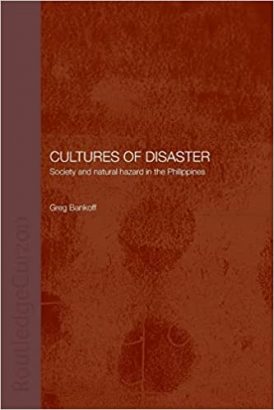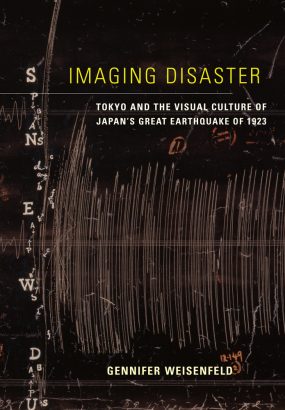Throughout the research process, the team will be reading and referencing different publications. This page serves as an archive of those works and their synopses.
✎﹏﹏﹏﹏﹏﹏﹏﹏﹏﹏﹏﹏﹏﹏
Views from the ground: On social media’s outreach and Typhoon Haiyan
By Helen Jakubowicz (December 2023)
I read two articles on Typhoon Yolanda/Haiyan with interest: one on the concept of “citizen aid” and brokers by Dierde McKay and Padamapani Perez, and the other on how beneficiaries of aid were “obliged to be grateful” written by Jonathan Corpus Ong, Jaime Manuel Flores, and Pamela Combinido. Both focus on underprivileged groups and local actors who try to secure and distribute aid for them, but I was curious about how each article studied ways that social media was used to raise awareness, and how successful the use of social media was in getting in contact with the affected populations in the central Philippines. I found a common theme: the use of social media to raise awareness nationally or internationally and obtain funds and humanitarian aid from people around the world.
 This is specifically fleshed out within McKay and Perez’s article, Citizen Aid, Social Media, and Brokerage after Disaster. Within their research, McKay and Perez “demonstrate how social media had produced novel forms of brokerage shaped by circulating images online” (McKay and Perez). They do this using a case study approach and defining terms when they become applicable.
This is specifically fleshed out within McKay and Perez’s article, Citizen Aid, Social Media, and Brokerage after Disaster. Within their research, McKay and Perez “demonstrate how social media had produced novel forms of brokerage shaped by circulating images online” (McKay and Perez). They do this using a case study approach and defining terms when they become applicable.
According to McKay and Perez, brokers are “actors who draw together and facilitate exchanges between disparate systems, peoples and spaces”. In this case, brokers would be the people who post on social media to raise awareness with the objective of raising funds for those affected by Typhoon Haiyan. One specific goal of the brokers is to raise citizen aid. Citizen aid is, “what local and informal groups offer to fellow citizens on the front lines” (McKay and Perez). Citizen aid in the Philippines is more focused on what other people in the Philippines can do for their fellow citizens. A way that brokers do this is by posting on social media to showcase who was affected by the disaster which raises awareness for the cause. They defined four groups of brokers, however, I will focus on two due to their social media presence. The first being Philippines based companies or groups of volunteers who formed new informal aid organizations who posted on social media to amplify efforts and gain funds. The second being aid workers who worked online only who posted to gain attention for material aid responders and individuals who switched their focus from their jobs to help those affected by the Typhoon. An example of how they do this is by making a post on X (previously Twitter), or Facebook and using the hashtag Yolanda or Haiyan.
One of these brokers who was quite successful in raising awareness and money on social media was an organization that McKay and Perez call “EcoTrek”. Ecotrek is “an ecotourism provider that operates on a remote western island in the Philippines Southern Tagalog Region” (McKay and Perez). Due to their popularity in the Philippines, they had the best opportunities to raise funds. Their targets for funds were mainly foreign donors. They did this by posting photos on social media to give the viewers a closer and personal look at the affected. This is something that many companies and organizations use to raise awareness, but sometimes it falls flat. EcoTrek did it in a special way to make sure as many people saw it as it as possible. They didn’t only post in Philippine languages, they posted in English as well to make sure as many people could understand the situation as possible. This caused a chain reaction of other organizations to ask if they could help EcoTrek . For example, “Facebook USA asked if they could help” (McKay and Perez). EcoTrek then made a short video in support of the victims of Typhoon Haiyan. Whether viewed as a marketing ploy, or an attempt to gain publicity, in the end it truly did help raise awareness and prompt individuals across the globe to help.
 By contrast, in Obliged to be Grateful: How Local Communities Experienced Humanitarian Actors in the Haiyan Response, the use of social media to receive aid is only touched upon briefly. However, the authors focused specifically on social media accounts by Filipinos and separated their findings by age group. Their findings were especially interesting to me when compared to the first article where social media was a huge and crucial factor in receiving aid. The authors note that Filipino social media users had different modes of access based on social class: more affluent users have direct access to Facebook on their smart phones in contrast to the less affluent who used Facebook in internet cafes. During the time of the study, below sixty percent had a Facebook account regardless of socioeconomic status. They also noted that among middle class users in the Philippines, “few reported using Facebook for fundraising initiatives directed to the community” (Combinido, Flores, and Ong). When they used Facebook, it was not for “checking on agencies’ websites, much less give them feedback about their interventions on the ground” (Combinido, Flores, and Ong).
By contrast, in Obliged to be Grateful: How Local Communities Experienced Humanitarian Actors in the Haiyan Response, the use of social media to receive aid is only touched upon briefly. However, the authors focused specifically on social media accounts by Filipinos and separated their findings by age group. Their findings were especially interesting to me when compared to the first article where social media was a huge and crucial factor in receiving aid. The authors note that Filipino social media users had different modes of access based on social class: more affluent users have direct access to Facebook on their smart phones in contrast to the less affluent who used Facebook in internet cafes. During the time of the study, below sixty percent had a Facebook account regardless of socioeconomic status. They also noted that among middle class users in the Philippines, “few reported using Facebook for fundraising initiatives directed to the community” (Combinido, Flores, and Ong). When they used Facebook, it was not for “checking on agencies’ websites, much less give them feedback about their interventions on the ground” (Combinido, Flores, and Ong).
It seemed to me after reading the two articles, that the main goal of these organizations on social media was to raise awareness and ask for donations to give to the disaster victims in economic need through citizen aid, whether from fellow Filipinos in the country or international donors. This approach seemed to fall flat, especially since the individuals they were targeting for aid (Filipino middle class) were not using Facebook for that reason. Perhaps his is why EcoTrek, a tourism oriented business that decided to engage in citizen aid brokerage was more successful in gaining international attention while using Facebook by focusing on aid from other countries.
This is not to suggest that organizations asking Filipinos for aid didn’t work at all, or that they were indifferent. On the contrary, themany cases documented of Filipinos helping each other, like a “low-income woman in Tacloban used Facebook to comment on an agency’s livelihood project directed at small business owners” (Combinido, Flores, and Ong). This caused the agency to keep in contact with her to include her in future distributions. It just seems like to me that the aid-seeking entities who may be successful in raising funds had less success trying to contact the economically afflicted Filipinos through Facebook, because they didn’t have direct access to it.
From these two case studies that touched on Facebook usage, it seems evident that the best way humanitarian agencies or entities who want to get aid for a population internationally through social media; however, they also have to be mindful of actual outreach and social media platform usage among intended beneficiaries. If an aid brokers or agencies want to contact local populations who were affected, they must appeal to and use all ways of contact at their disposal but they cannot assume that donors and beneficiaries share social media platforms or use them in the same way.
For further reading
Deirdre McKay & Padmapani Perez (2019) Citizen aid, social media and brokerage after disaster, Third World Quarterly, 40:10, 1903-1920, DOI: 10.1080/01436597.2019.1634470
Corpus Ong, Jonathan, et al. (2015) Obliged to Be Grateful: How Local Communities Experienced Humanitarian Actors in the Haiyan Response. Plan International, Surrey, United Kingdom.
✎﹏﹏﹏﹏﹏﹏﹏﹏﹏﹏﹏﹏﹏﹏
 Cultures of Disaster
Cultures of Disaster
by Greg Bankoff
The Philippines is one of the world’s disaster ‘hot spots’. Throughout the archipelago’s history, natural hazards such as earthquakes, volcanic eruptions, typhoons, floods, and droughts have occurred with such frequency that they have helped shape Filipino society.
In this fascinating and pioneering study, Greg Bankoff traces the history of natural hazard in the Philippines from the early days of Spanish colonialism to the ‘Calamitous 1990s’. He examines the correlation between this history of disasters and the political structure, economic system, and social order within Filipino society. So constant has been the threat of disaster that it has been integrated into the schema of daily life to form what can be called ‘cultures of disaster’. (Ciana Vrtikapa, May 2022)
✎﹏﹏﹏﹏﹏﹏﹏﹏﹏﹏﹏﹏﹏﹏
 Imaging Disaster
Imaging Disaster
by Gennifer Weisenfeld
Focusing on one landmark catastrophic event in the history of an emerging modern nation- the Great Kantō Earthquake that devastated Tokyo and its surrounding areas in 1923- this fascinating volume examines the history of the visual production of the disaster. The Kantō earthquake triggered cultural responses that ran the gamut from voyeuristic, macabre thrill to the romantic sublime, from media spectacle to an appeal for sacred space, from mournful commemoration to emancipatory euphoria, and from national solidarity to racist vigilantism and sociopolitical critique.
Examining photographs, paintings, picture postcards, films, sketches, and more, Gennifer Weisenfeld demonstrates how visual culture has powerfully mediated the evolving historical understanding of this national disaster, ultimately enfolding mourning and memory into modernization. (Ciana Vrtikapa, May 2022)
